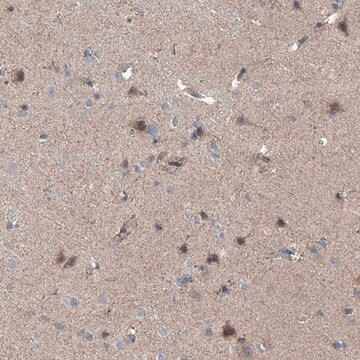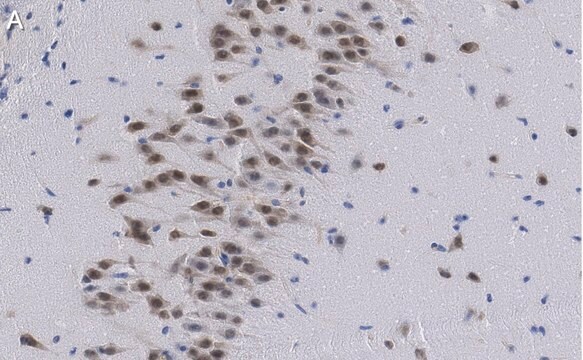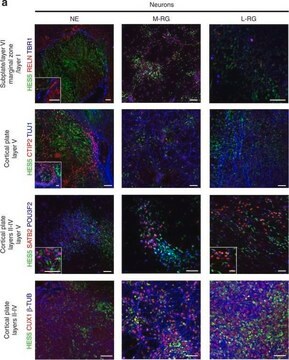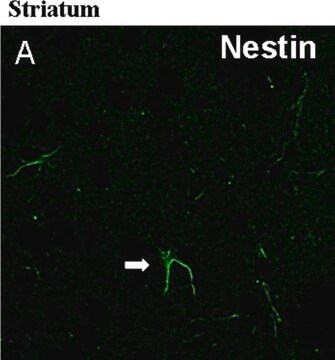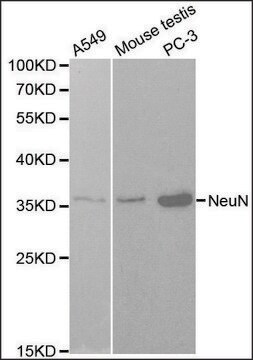ABN90P
Anti-NeuN purified Antibody
from guinea pig, purified by affinity chromatography
Sinônimo(s):
NEUronal Nuclei, clone A60, NeuN
About This Item
Produtos recomendados
fonte biológica
guinea pig
Nível de qualidade
forma do anticorpo
affinity isolated antibody
tipo de produto de anticorpo
primary antibodies
clone
polyclonal
purificado por
affinity chromatography
reatividade de espécies
human, rat, mouse
técnica(s)
immunocytochemistry: suitable
immunohistochemistry: suitable (paraffin)
western blot: suitable
Condições de expedição
wet ice
modificação pós-traducional do alvo
unmodified
Informações sobre genes
human ... RBFOX3(146713)
mouse ... Rbfox3(52897)
rat ... Rbfox3(287847)
Descrição geral
Especificidade
Imunogênio
Aplicação
Immunocytochemistry Analysis: A 1:1,000-2,000 dilution from a representative lot detected NeuN in rat E18 cortex cells.
Neuroscience
Neuronal & Glial Markers
Qualidade
Western Blot Analysis: A 1:1,000 dilution of this antibody detected NeuN on 10 µg of mouse E16 brain tissue lysate.
Descrição-alvo
forma física
Armazenamento e estabilidade
Nota de análise
Mouse E16 brain tissue lysate
Outras notas
Exoneração de responsabilidade
Não está encontrando o produto certo?
Experimente o nosso Ferramenta de seleção de produtos.
Código de classe de armazenamento
12 - Non Combustible Liquids
Classe de risco de água (WGK)
WGK 1
Ponto de fulgor (°F)
Not applicable
Ponto de fulgor (°C)
Not applicable
Certificados de análise (COA)
Busque Certificados de análise (COA) digitando o Número do Lote do produto. Os números de lote e remessa podem ser encontrados no rótulo de um produto após a palavra “Lot” ou “Batch”.
Já possui este produto?
Encontre a documentação dos produtos que você adquiriu recentemente na biblioteca de documentos.
Os clientes também visualizaram
Nossa equipe de cientistas tem experiência em todas as áreas de pesquisa, incluindo Life Sciences, ciência de materiais, síntese química, cromatografia, química analítica e muitas outras.
Entre em contato com a assistência técnica



